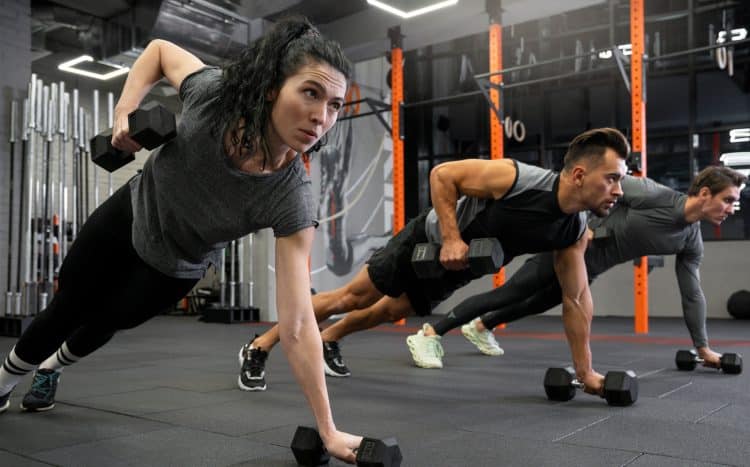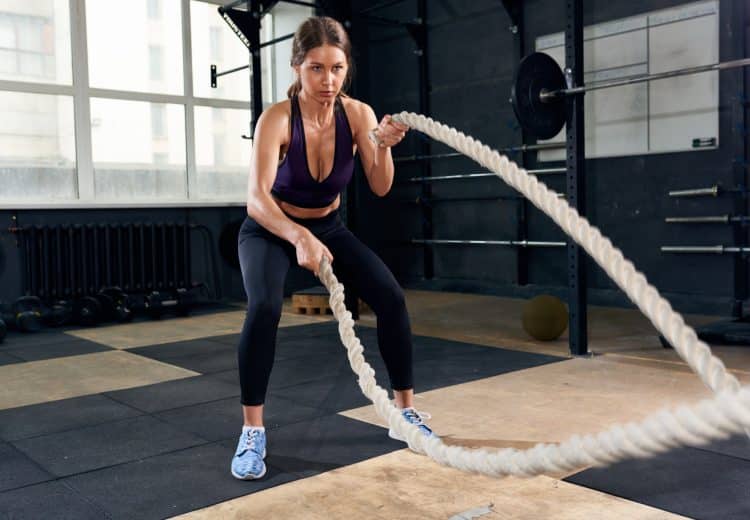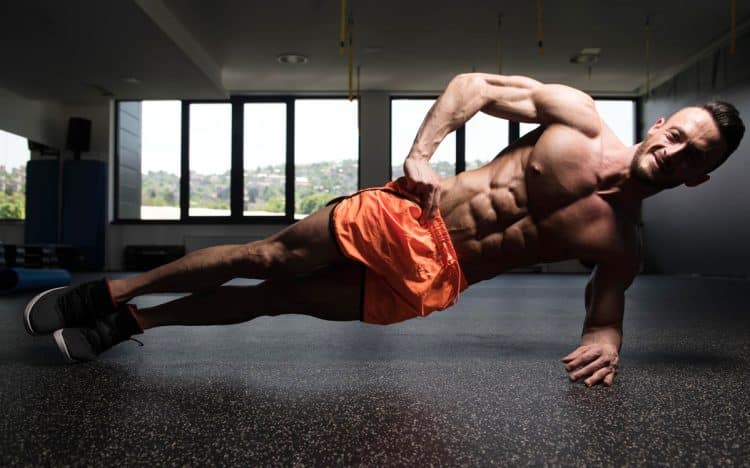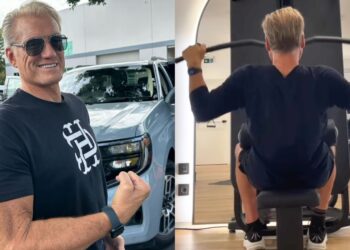While the ultra-rich have been aimlessly chasing the fountain of youth, the holy grail of peak physical and mental health lies right in front of us — exercise and fitness.
Research shows that regular exercise can boost longevity and reduce many major mortality risk factors, including arterial hypertension, type 2 diabetes, dyslipidemia, coronary heart disease, stroke, and cancer. (1)
As a personal trainer with almost two decades of experience, I can attest that most people fail to stay consistent with their exercise routines as they grow older.
Why is that, you ask? They failed to adapt their training program to their age.
Remember, what works for you in your 20s might not be as effective in your 30s, 40s, or beyond. Your body, metabolism, muscle elasticity, and endurance are constantly changing, and your workouts must keep up with them.
Most people train their hardest during their 20s. However, that might not be possible when they are in their 30s because of a hectic job or a busy family life. But remember, this is all perfectly normal, and you do not have to give up your exercise routine because of it.
Level Up Your Fitness: Join our 💪 strong community in Fitness Volt Newsletter. Get daily inspiration, expert-backed workouts, nutrition tips, the latest in strength sports, and the support you need to reach your goals. Subscribe for free!
In this article, I’ll give you a decade-by-decade training blueprint for your strength, cardio, and flexibility goals that adapt to your life and will help in optimal long-term health and well-being. We have a lot to cover, so let’s roll our sleeves and dig in.
1. Roaring Twenties: Building a Foundation
Most 20-year-olds feel indestructible. They can go through the most intense and higher-volume training programs and recover within a day or two. In contrast, older individuals have to deal with severe delayed-onset muscle soreness (DOMS) and chronic fatigue.
You must use your twenties to build a solid foundation, which includes gaining lean muscle mass, functional strength, and improving cardiovascular conditioning.
Strength: The Power of Compound Moves
Your muscles, joints, tendons, ligaments, and connective tissue are brand-new in your 20s. Leverage this by lifting heavy and focusing on building functional strength. Your workouts will comprise a mix of bodyweight, free-weight, and machine exercises.
Bodyweight Training
These include push-ups, pull-ups, squats, and planks. Bodyweight exercises are especially good for people who do not have access to a training facility. You can do these versatile exercises anywhere and at any time.
Free-Weights
As you gain more experience, dumbbell and barbell exercises should become the mainstay of your training regime. They help build muscle mass and strength. However, you must alter your training volume depending on your most immediate goal.
Strive for 8-12 reps with 60 to 80 percent of your one-rep max (1RM) to prioritize hypertrophy. On the flip side, doing 1-5 reps with 80 to 100 percent of your 1RM can help maximize muscle gains. (2)
Machine Exercises
Machines offer a fixed line of pull which can help with better mind-muscle connection and isolating a muscle group. Since these exercises do not require you to balance the weights, you can lift heavier without significantly increasing injury risk.
Coach Tip: Whether you are doing bodyweight, free-weight, or machine exercises, your workouts should balance compound and isolation movement to ensure optimal development.
Cardio: HIIT It Hard!
While a jacked physique can make you look aesthetically appealing, you cannot forget the importance of cardiovascular conditioning. High-intensity interval training (HIIT) should be your go-to. These involve short bursts of intense exercise followed by brief recovery periods.
HIIT sessions can help build muscle, lose fat, and improve heart function, making it the most time-efficient protocol for people in this age group.
One of the best parts of HIIT training is that it can last anywhere between 5 to 30 minutes, meaning you do not have to spend long hours in the gym to achieve your fitness objectives.
Some of the most common types of cardio training involve running, swimming, dancing, hiking, bodyweight, and resistance training. The key here is to find something that you enjoy so that you can stick with it for the long term.
Flexibility: Don’t Skip the Stretch
Ignoring flexibility and mobility, training is one of the most common mistakes I see people make in their 20s. Honestly, I made this mistake, too, and learned the lesson the hard way.
Lack of mobility not only hampers your exercise performance due to limited range of motion (ROM) but also significantly increases the risk of getting hurt.
Remember, it is easier to work on your mobility from the beginning than to start working on it when you are stiff like a rock.
I recommend two types of stretching. Dynamic stretching is to be done before a workout as it helps warm up the target muscles. Conversely, static stretches are to be done after a workout as they help your muscles relax and flush out the metabolites from your muscle tissues, kickstarting recovery.
That said, you can also adopt yoga or Pilates, depending on your personal preferences.
Coach Tip: Want to know how your strength stacks up against peers of your age? Check out these strength standards for different exercises and lifters of varying experience levels.
This calculator gives you a benchmark and a solid idea of when you should alter your training program based on your current performance.
2. Thriving Thirties: Maintaining Momentum
As soon as you enter a new decade of your life, you must start thinking about the things that you need to start doing differently to boost longevity and ensure optimal overall health and well-being. All of this starts with your exercise routine.
As you enter your thirties, you will likely have a busier work, family, and social life. However, you cannot let these commitments destroy your health.
You built a strong foundation in the previous decade. Now, you must maintain momentum to optimize your fitness levels for the long haul.
Strength: Holding Strong and Pushing Further
If you are a hobbyist lifter, you should now prioritize holding onto the strength and muscle mass that you built in your 20s.
Level Up Your Fitness: Join our 💪 strong community in Fitness Volt Newsletter. Get daily inspiration, expert-backed workouts, nutrition tips, the latest in strength sports, and the support you need to reach your goals. Subscribe for free!
This decade is especially important in terms of strength training, as consistent exercise can result in muscle maturity, leading to a denser, more defined physique.
Although the types of exercises usually stay the same throughout, you must prefer movements that don’t lead to any unnecessary strain and have a favorable stimulus-to-fatigue (STF) ratio. For instance, you can consider switching deadlifts with bent-over rows for building a thicker back.
You must also employ progressive overload to ensure consistent progress. It involves gradually increasing the weight, reps, or sets to avoid hitting a strength or muscle plateau.
Remember, besides making you look aesthetically appealing, a ripped physique boosts your metabolism, allowing you to burn calories throughout the day, even when you are not physically active. This can help improve your body composition.
Cardio: Finding Your Rhythm
Cardio training in your forties involves adding a new type of workout to adjust to the new demands of daily life.
Besides HIIT workouts, you’ll introduce moderate-intensity steady-state (MISS) cardio to maximize the afterburn effect. It helps burn calories hours after completing your workout. MISS workouts can also improve your cardiovascular endurance.
Flexibility: Stay Limber, Stay Agile
Mobility training should become an indispensable part of your training regime as you get older. Sitting for long hours at a desk every day can cause muscle imbalance, which can result in back pain. From generic mobility flows, you should adopt mobility workouts that specifically cater to particular needs.
Feel free to seek professional help to address issues like stiff shoulders and pelvic tilts.
Even if you are not facing any immediate mobility issues, regular stretching can be considered a preventative measure to keep you feeling loose and agile.
The best part about mobility training is that it doesn’t need a lot of effort, but the results are pretty quick. You can experience the effects within eight to 12 weeks of consistent practice.
3. Fabulous Forties: Adapting and Overcoming
When you have been training consistently for two decades, fitness will become an indispensable part of your life. The great thing about this phase is that you will have all the experience in the world and will know exactly what works and what doesn’t work for your body.
However, your body will undergo some significant changes at this point. You will experience age-related muscle loss (sarcopenia). Many of my personal training clients also report compromised muscle elasticity, which hampers force production and stretch reflex response and can cause muscle tightness and pain.
Strength Training
Strength training should be a part of your lifestyle in your forties as it can help combat sarcopenia. This will help improve your functional fitness and overall quality of life. Strength training can also support bone health and prevent osteoporosis. (3)
Alter your workouts depending on your current fitness levels. However, I would highly recommend performing compound movements like squats, deadlifts, and lunges.
Although strength training is generally safe, older folks are at a greater risk of injury when using incorrect form or lifting too heavy. Modify your training programming to accommodate any physical limitations.
Cardiovascular Health
As for cardiovascular training, you should opt for low-intensity steady-state (LISS) cardio. It involves maintaining a training intensity where you can hold a conversation with someone.
This cardio routine will improve your aerobic capacity, help you manage weight, improve heart rate, and reduce the risk of chronic diseases.
I would also recommend opting for low-impact exercises like swimming, cycling, or brisk walking to avoid joint strain and reduce injury risk.
Flexibility: The Key to Mobility and Injury Prevention
Whether you are training every day or not, stretching, foam rolling, and massages should be a part of your daily routine. These can help improve joint mobility and reduce muscle soreness, boosting your overall functionality.
Adding yoga to your training regime at this point can be incredibly effective as it will improve your flexibility, balance, and coordination and help you practice mindfulness.
Flexibility training can also be an excellent stress buster, which is important for maintaining a healthy lifestyle and ensuring longevity.
Factors To Consider While Training For Strength or Cardio
Here are the things you should consider when adjusting your training regime for your age:
Proper Nutrition
Although we have mainly discussed strength, cardio, and mobility training in this article, nutrition is just as important.
Use this total daily energy expenditure (TDEE) calculator to determine your ideal daily calorie needs. Then, break them down into a suitable macro split to maximize your gains. Each individual has unique energy needs depending on their lifestyle, and you must constantly monitor and alter it to keep up with the demands of your daily life.
Prioritize Sleep, Stress Management, and Recovery
As you grow older, you usually have more responsibilities. Letting these run wild can lead to excessive stress, which can negatively impact your overall health and well-being.
Recovery is a crucial aspect of attaining peak physical and mental conditioning. Prioritize eight hours of sleep every night to allow your body enough time to rest and recuperate. Other recovery techniques like cold water showers, foam rolling, and massages can also help enhance your results.
Learn To Listen To Your Body
Discontinue a workout if something feels weird or unnatural. I recommend seeking an experienced personal trainer’s help to design a personalized training regime. This will ensure optimal results and significantly limit the risk of injury.
Conclusion
There is no doubt in my mind that you can defy aging with fitness. However, you must set realistic goals according to your age and physical needs and adjust them in response to changes in metabolism, muscle elasticity, and endurance.
Whether you are in your twenties, thirties, forties, or even fifties, consistency, dedication, and discipline are the most important factors for boosting longevity and achieving your fitness goals.
If you have any questions or doubts about how your training should evolve with your age, post them in the comments below, and I’ll be happy to help!
References:
- Reimers CD, Knapp G, Reimers AK. Does physical activity increase life expectancy? A review of the literature. J Aging Res. 2012;2012:243958. doi: 10.1155/2012/243958. Epub 2012 Jul 1. PMID: 22811911; PMCID: PMC3395188.
- Schoenfeld BJ, Grgic J, Van Every DW, Plotkin DL. Loading Recommendations for Muscle Strength, Hypertrophy, and Local Endurance: A Re-Examination of the Repetition Continuum. Sports (Basel). 2021 Feb 22;9(2):32. doi: 10.3390/sports9020032. PMID: 33671664; PMCID: PMC7927075.
- Layne, J. E., & Nelson, M. E. (1999). The effects of progressive resistance training on bone density: a review. Medicine and science in sports and exercise, 31(1), 25–30. https://doi.org/10.1097/00005768-199901000-00006














